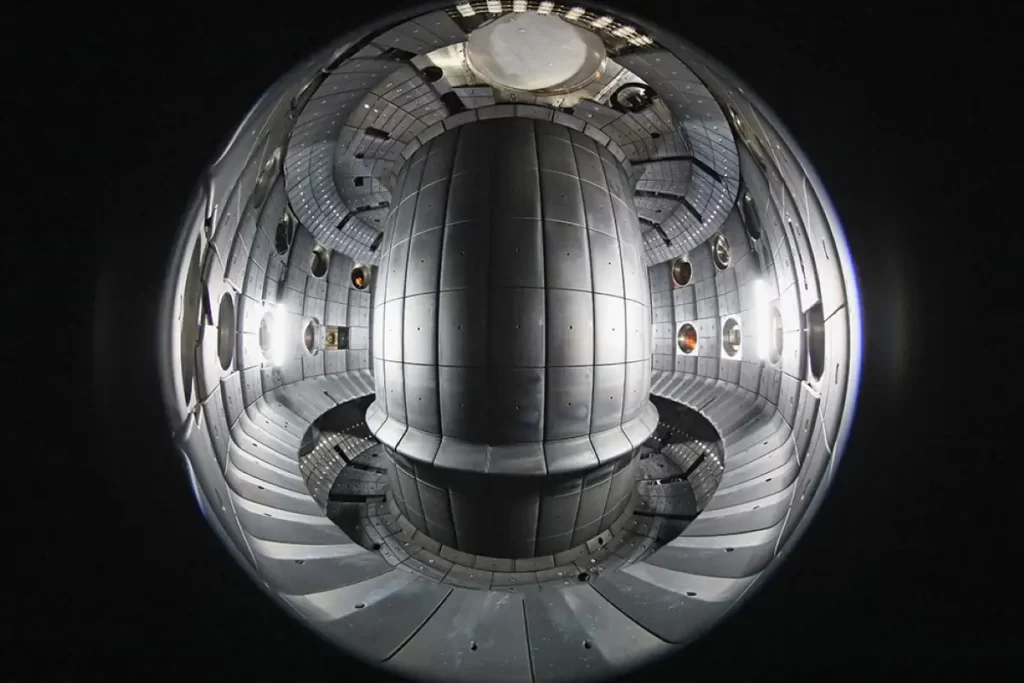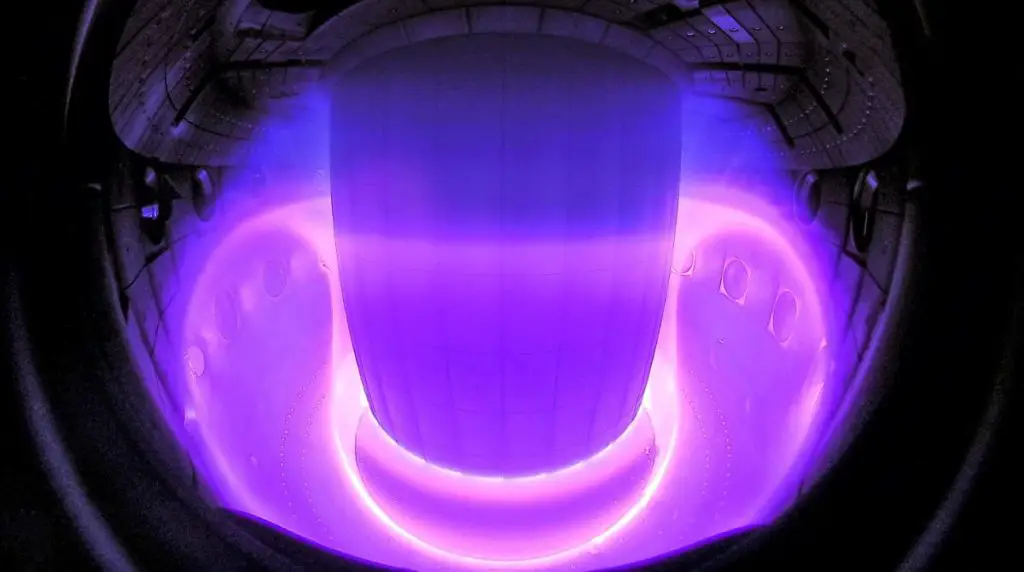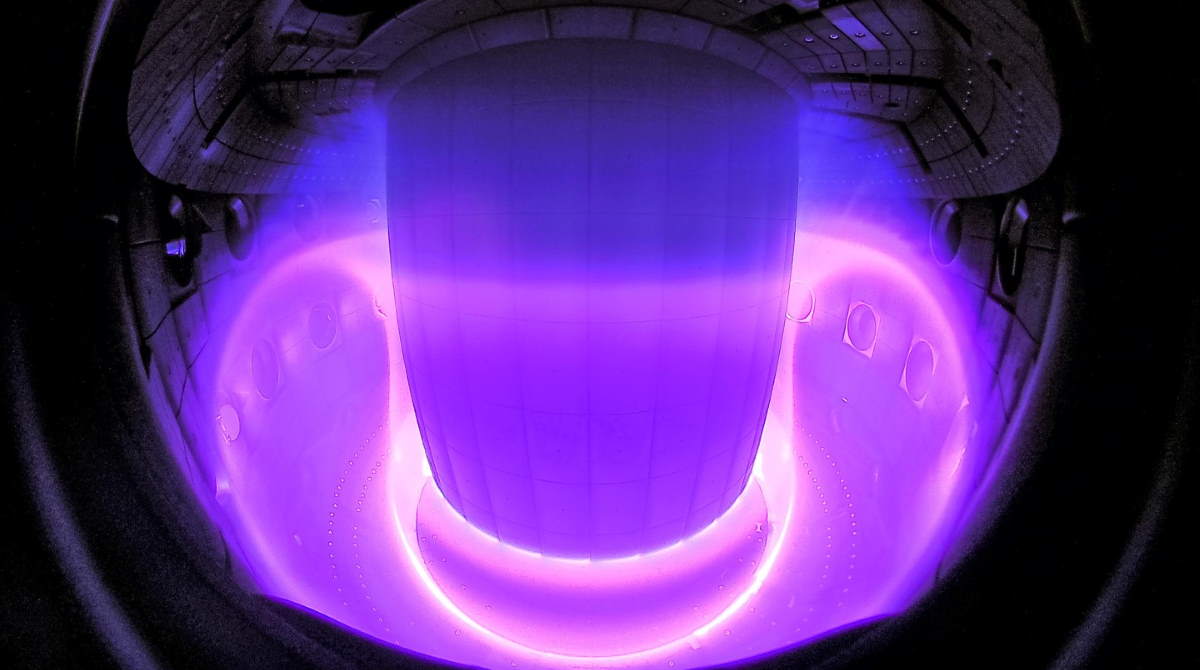To keep Earth from dangerous ongoing global warming, the world is looking for an energy source without CO2 emissions. There is actually a dream candidate: successfully achieving nuclear fusion holds the promise of delivering a limitless, sustainable source of clean energy.
What is nuclear fusion?
Nuclear fusion is basically joining two or more atomic nuclei to form one or more different atomic nuclei and various sub-atomic particles, like when two hydrogen atoms fuse to form one helium atom. It is the process that powers active or main-sequence stars (including our Sun) and other high-magnitude stars. Nuclear fusion releases huge amounts of energy. It produces way more energy than nuclear fission, which is the splitting of a heavy, unstable nucleus into two lighter nuclei. Unlike nuclear fission, fusion produces very low nuclear waste.
Soviet scientists Igor Tamm and Andrei Sakharov already laid the theoretical foundations for a fusion reactor (tokamak) in the early 1950s, but so far it has not been possible to solve the technical problems of such a tokamak reactor.
For many decades, scientists experimented with various fusion reactors, mainly tokamaks, but it is difficult to sustain nuclear fusion for long periods of time because of the tremendous amount of pressure and temperature needed to join the nuclei together. The main technical difficulty is controlling the unstable and super-heated plasma in the reactor.
Experimental fusion reactors usually produce energy for only microseconds and use more power than they generate. In other words, they generate negative “net energy”.
There’s even an ongoing joke that the fusion is always 30 years away. Because, since the 1950s, scientists and engineers suggested that “in 30 years, we’ll iron out the technical difficulties and have limitless, clean energy”. That 30 years never came.
A new breakthrough: Artificial Intelligence (AI) successfully controlled plasma in a Nuclear Fusion experiment
Now, finally, things may change. Using DeepMind’s deep reinforcement learning algorithm, scientists from the Swiss Federal Institute of Technology Lausanne’s (EPFL) Swiss Plasma Center (SPC) developed a new method for controlling plasma configurations for use in nuclear fusion research.
In tokamaks, a powerful magnetic field confines plasma in the shape of a torus. In this process, a large number of settings, especially voltage, must be controlled carefully. Otherwise, the plasma could collide with the vessel walls and deteriorate.

Deepmind’s experts (DeepMind Technologies is a British artificial intelligence subsidiary of Alphabet Inc., Google’s parent company) developed an AI algorithm that can create and maintain specific plasma configurations and trained it on the Swiss Plasma Center’s (SPC) simulator.
The AI algorithm first tried many different control strategies in simulation and gathered experience. In other words, it “learned” how to control plasma more efficiently.
Then, based on the collected experience, the algorithm generated a control strategy to produce the requested plasma configuration. It performed many experiments in the simulator using a number of different settings and analyzed the plasma configurations that resulted from each one.
Then, scientists called the algorithm to work in the other way, to produce a specific plasma configuration by identifying the right settings. When this training was completed, the AI-based algorithm was able to create and maintain a wide range of plasma shapes and advanced configurations, including one where two separate plasmas are maintained simultaneously in the vessel, this is never seen before.
Finally, the research team tested their new system directly on the tokamak itself to see how it would perform under real-world conditions.

Scientists announced in a paper published in the journal Nature that:
“This architecture meets control objectives specified at a high level, at the same time satisfying physical and operational constraints. This approach has unprecedented flexibility and generality in problem specification and yields a notable reduction in the design effort to produce new plasma configurations. We successfully produce and control a diverse set of plasma configurations on the Tokamak à Configuration Variable including elongated, conventional shapes, as well as advanced configurations, such as negative triangularity and ‘snowflake’ configurations.”
So, the new approach was a resounding success, according to researchers.
But, we have to keep in mind that the TCV is an experimental facility, it does not produce energy. It’s a very useful research tool for testing and observing how this extremely difficult process of controlling plasma in a reactor.
Are we still 30 years away from limitless, clean energy, but this time for real? Time will tell.
Differences between fusion and fission
Both fission and fusion are physical processes that produce massive amounts of energy from atoms. But, as explained above, there are major differences:
- Fission occurs when a neutron slams into a larger atom, forcing it to excite and spilt into two smaller atoms-also known as fission products. Additional neutrons are also released that can initiate a chain reaction. During the process, a massive amount of energy is released. Contrarily, Fusion occurs when two atoms slam together to form a heavier atom, like when two hydrogen atoms fuse to form one helium atom.
- Nuclear fission reactors usually use uranium and plutonium because they are easy to initiate and control. Fusion reactors use hydrogen.
- Fission reactors generate nuclear waste as a byproduct. Fusion reactors mainly produce helium and create far less radioactive material than fission reactors.
- Nuclear fusion creates much more energy than nuclear fission.
Nuclear energy (both fission and fusion) is a carbon-free energy source that can bring resilience and reliability to the world’s electric grid.
Sources
- Nuclear fusion on Wikipedia
- “European scientists set a new record in the production of nuclear fusion energy” on the France 24 website
- “Physics Breakthrough as AI Successfully Controls Plasma in Nuclear Fusion Experiment” on the Science Alert website
- Fission and Fusion: What is the Difference? on the U.S. Department of Energy website
- Study: “Magnetic control of tokamak plasmas through deep reinforcement learning” on Nature
- Moon Landings: All-Time List [1966-2025] - February 2, 2025
- What Is Max-Q and Why Is It Important During Rocket Launches? - January 16, 2025
- Top 10 Tallest Rockets Ever Launched [2025 Update] - January 16, 2025
